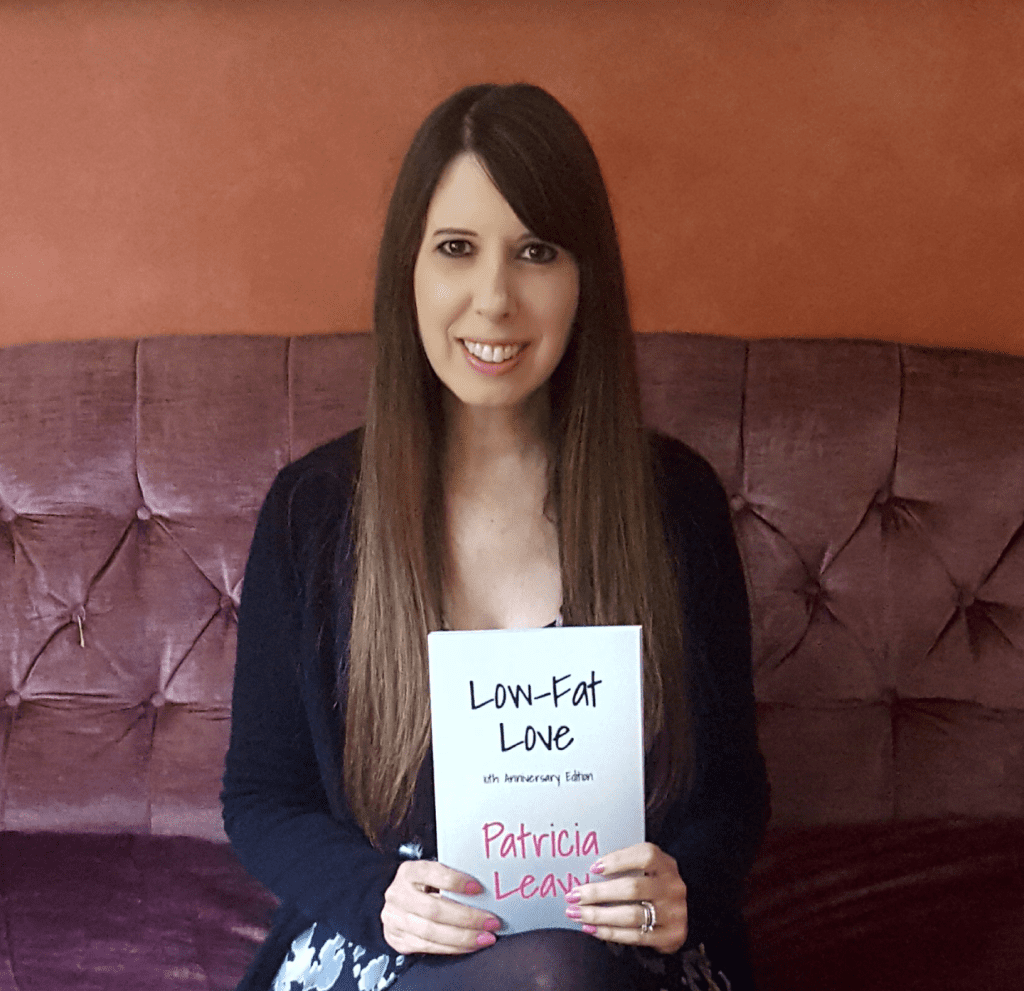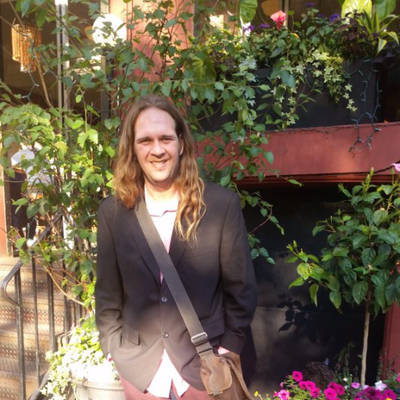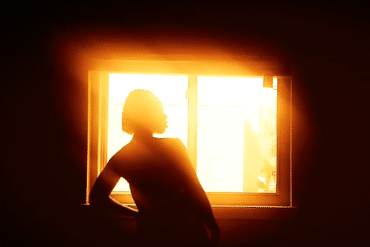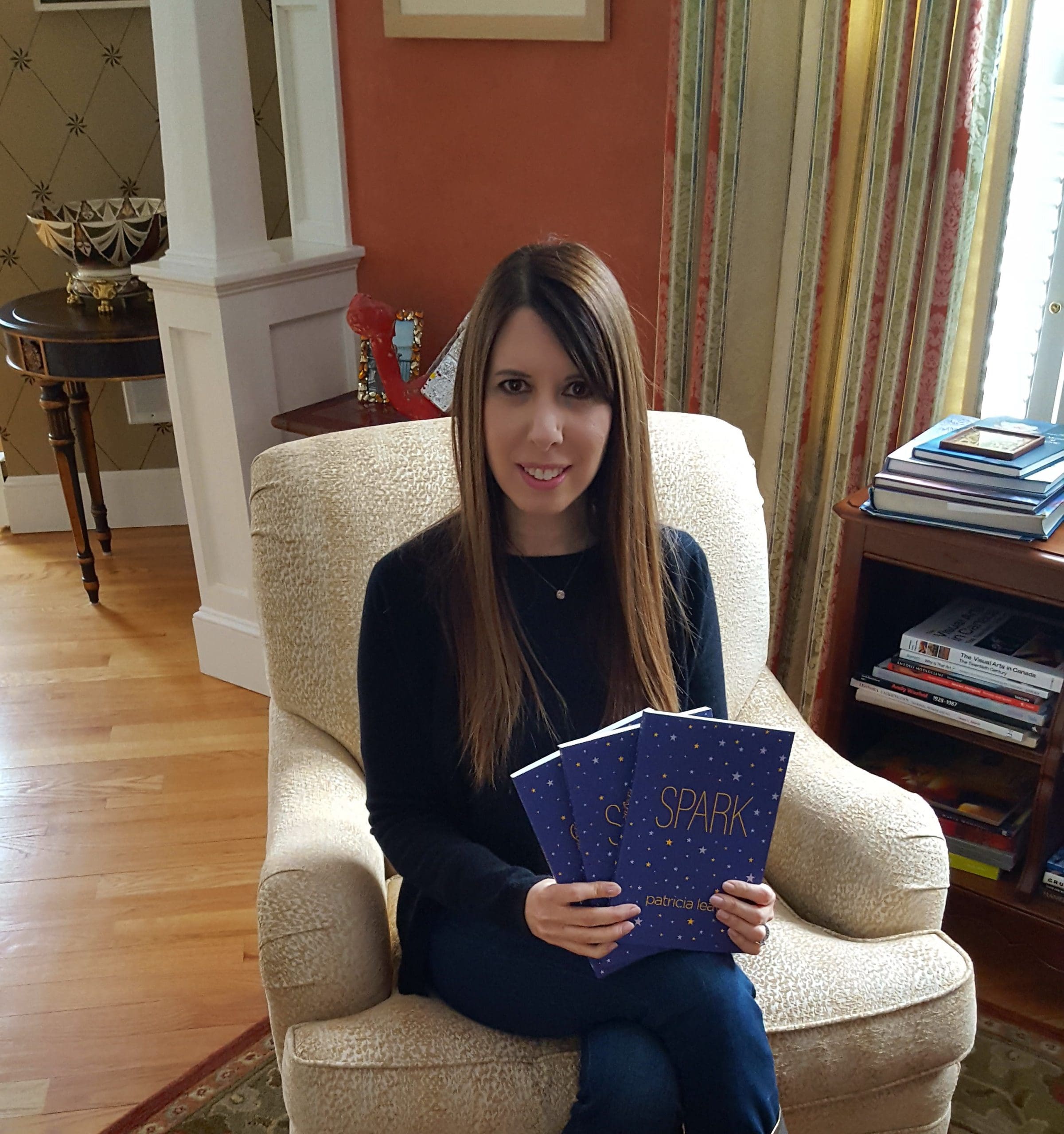The Impact of Patricia Leavy’s Social (Sociological) Fiction
“I still talk to my friends about Prilly,” Tori (1) says pouring raw sugar into a chipped Orlando Pride mug at 3:45 on a Thursday afternoon.
“You’re actually not the first former student to tell me that,” I say taking my own coffee from the barista and moving toward the large wooden piece that serves as the condiment counter in Stardust Video & Coffee. The former student proceeds to tell me how much she “hate-related” to Prilly Greene when she first read Patricia Leavy’s Low-Fat Love as a student over five years ago. She talks about the novel becoming a reminder for her to “care more about myself, not settle for almost good enough boys.” The conversation shifts to her journey since college. Her current friends find her and say hello. They are all here for the market in the parking lot, planning to go drinking with other friends at the brewery around the corner. Tori tells the three friends that we are talking about Prilly. All but one has a visible reaction to this news.
“So, you’re the reason this girl changed my whole approach to dating,” one friend quips.
“I didn’t write it,” I say with a shrug.
Laughing and flipping her wrist, she says, “Thank goodness someone did.”
Thank goodness someone did.
Thank goodness someone wrote that, about that, in that way.
The former student proceeds to tell me how much she “hate-related” to Prilly Greene when she first read Patricia Leavy’s Low-Fat Love as a student over five years ago.

Gratitude is a recurring theme I hear from readers of Patricia Leavy’s sociological fiction. Sometimes it comes from former students who fell in love with a book like Low-Fat Love or American Circumstance or Film that I used in a class on gender, sexualities, or the application of sociology or social science more broadly. Sometimes it comes from friends and colleagues after they’ve read a Leavy novel I gave them for a holiday or in response to something specific in their life at the time. A third case comes from students in classes as they encounter and do work related to Patricia Leavy’s novels or short stories as part of their overall semester. In such cases, the sentiment returns like a boomerang each time, thank goodness for this.
Of course, the general gratitude covers a multitude of specificities.
I think about a student named Stephen.
He graduated four years ago at the time of this composition. I first met him in an Introduction to Sociology class. He stayed after the required time period on a Thursday. He could have been a display on a casting call for a surfing movie – baggy shorts, wrinkled T-shirt, skateboard left in the corner for the class period, curly long brown hair: he talked about feeling out of place, the differences between his small town on the Gulf and the (mostly northern) cities his rich classmates came from, a constant awareness of his scholarships. I gave him some materials. It’s not an unusual part of the job at a private, liberal arts university situated near beaches, mansions, and the home of a rather famous mouse.
‘Gratitude is a recurring theme I hear from readers of Patricia Leavy’s sociological fiction.
He returned three weeks later with a copy of Patricia Leavy’s American Circumstance.
He held it in his left hand, the same one he wrote with in class.
The literature professors I had in college would have called the paperback Stephen held “loved.” The cover and spine were bent, beaten up, and worn out like an old rag. The inside had notes all over different pages and parts of the novel, small stickers used to mark certain pages. I thought maybe the kid got the book in a different class and was studying it for a test or long form essay. That’s the kind of attention the book looked like it was getting.
My assumption was incorrect. Stephen reminded me American Circumstance was one of the books I gave him. He proceeded to talk about the class analysis, inter-class dynamics of the characters, and nuanced portraits of the differences portrayed in the book and he felt those plot points. He found a reflection of himself between the pages, had so many notes and he gripped the book, almost like a life preserver, while he talked. It was the most animated I had seen him.
He felt seen.
He referenced the book regularly in class sessions throughout the rest of the semester.
…felt seen.
That moment was the first thing I thought about when I was asked to write about Patricia Leavy’s sociological fiction. I could see Stephen’s face as he gripped the paperback copy. At first, I wondered about a piece summarizing Leavy’s catalog, but that didn’t feel right. I wanted more than summary, I could hear the joy in Tori’s voice as she talked about Prilly five years after she had to read the book for a class, her friends I didn’t recognize from classes knowing Prilly and I kept thinking.
I imagined a synthesis of Leavy’s themes – the kind I might have written if I’d done a literature degree at a long gone fork in the road – with quotations from the books and connections drawn to other writers whose work I love. Then, I remembered a colleague gushing and blushing about Spark helping him when he ran into a wall concerning what, if any, research he wanted to do in the next stage of his career. I wanted to capture that and focus on the impact. I wanted to share how Patricia Leavy’s fiction moves people, impacts their lives and journeys, and sticks with them for years in significant ways.
So, this is an essay about Patricia Leavy’s fiction.
But it’s even more about her fiction’s impact on others.
And impact is not one size fits all.
It’s the kind of thing that drives folks in search of simple answers wild.
I wanted to share how Patricia Leavy’s fiction moves people, impacts their lives and journeys, and sticks with them for years in significant ways.
It’s especially fitting that the person who first put a version of those last two sentences in my head is also a person impacted by Patricia Leavy’s fictional endeavors. We will call her Winter for this recollection. She grew up wanting to be the best in her class. Winter excelled in secondary school, college, graduate study, and even in workshops and classes for hobbies and other endeavors throughout her life. In some ways, that became part of the problem. She reached a certain age.
She wasn’t sure what to do and felt “not necessarily burned out,” but worn down, “like paint that has started to fade, I didn’t like fading.”: she was looking for answers and was brave enough to ask people around her. The people around her cared enough to provide a slew of answers. Two of her colleagues gave her the same book, Spark by Patricia Leavy. She chose to read it because “there is something to be said about people who don’t know each other providing the same exact suggestion.”: she took the novel on a break, on a vacation, summer reading and what not.
She took other things too; it was a multifaceted assault on the doldrums.
Then, I remembered a colleague gushing and blushing about Spark helping him when he ran into a wall concerning what, if any, research he wanted to do in the next stage of his career. I wanted to capture that.
She came back with new creative endeavors, new questions, and new plans. “It wasn’t like it was all better,” she said. “That would be like something out of a story book, but I did feel different. I think two things, that drawing set, the kind I thought was so cool as a kid, and that story, the one about Peyton (2) that you read too (3), about learning to start over or that’s what I took from it. Those two and then the people, I don’t know, I think I started to feel like a kid again, the good parts.” She said these things holding a color pencil, between strokes that would become a drawing. We were in a park. Quarantines were around the corner, still out of sight – the sun turned the top of the river into a mirror covered in glitter, and she started coloring again.
I have now given away copies of Spark more than a few times myself.
Maybe because I’m in academia, maybe because a pandemic can make people reevaluate.
So, this is an essay about Patricia Leavy’s fiction.
Whatever the case, Winter was only the first time I saw someone use Spark as part of the kindling for re-lighting their own fires. Lucy was a different story, not burned out in the least. She was searching for books to jumpstart her youthful reading habits. She finally had more time, “finally could breathe, I made it somehow.” I gave her a copy of Spark, talked to her about it over coffee weeks later. The next six times I saw her she was reading Patricia Leavy novels including Shooting Stars Above, Blue, Twinkle of Doubt, and Low-Fat Love.
I was recently telling her about the release of Leavy’s Hollyland just before going out to play disc golf with a friend and colleague who “felt like Spark really spoke to me, it was perfect with me going on my own trip overseas while reading it.” It almost felt like a repeat as my mind flashed back to Mikey saying, “This one [Spark] speaks to me, I mean, I just feel washed, but I know I gotta get back into it, you know, especially if I ever want full [professor].” Maybe the least surprising thing I can say is that an engaging novel about an academic at a personal and professional crossroads resonates quite well with academics in various disciplines and professional settings today.
That’s the kind of relationship we expect, a correlation spotted from miles away.
But Patricia Leavy also has an ability to impact deeply private aspects of readers’ lives.
Maybe because I’m in academia, maybe because a pandemic can make people reevaluate.
Although I could offer quite a few examples here, the primary ways Patricia Leavy’s novels dig into private, deeply personal and often difficult, parts of readers’ lives take two forms in my experience. The first one comes in cases where a deep trauma expressed in fictional form collides with a reader navigating aspects of that trauma while reading. This was common in classes where students reacted to Tash’s (4) experiences with violence and uncertainty by sharing their own experiences and how “Tash almost felt like a version of me at times,” or that “Tash reacted so much like me, so much like, you know, there is something in that, seeing it from someone else, from a Ph.D. even, like the writer gets it and that tells me, you know.”
Whether in the case of Tori above or in so many other situations with students in gender classes, Prilly is another lightning rod for personal revelation and expression, especially when young women experience, “Like the first time I realized I was dating shit men over and over and over again because good enough I guess, like what the hell.” As a young woman we’ll call Carrie wrote in an essay for class in 2019, “Prilly is the ultimate love/hate relationship for me. I am her, but there are parts of that I don’t want to see or think about too much. She’s too good of a representation.”
Some of the most important fiction is “too good of a representation.”
And that automatically reminds me of a former student I’ll call Leigh.
I was recently telling her about the release of Leavy’s Hollyland just before going out to play disc golf with a friend and colleague who “felt like Spark really spoke to me, it was perfect with me going on my own trip overseas while reading it.”
Leigh was a student in a few of my classes between 2019 and 2022. She was focused on health, social work, and the possibility of making a difference in the lives of kids and she graduated with high marks and has continued to successfully pursue her goals since. Leigh comes to mind in this case because after reading “Mirror Mirror” for one of my classes, she then chose to read the entirety of Low-Fat Love Stories by Patricia Leavy and Victoria Scotti and she became emotional discussing “Mirror Mirror” in class, but it wasn’t until after reading the full short story collection that she shared the why of those emotions with the class.
She told the class that she was pretty sure she grew up in an abusive household, but had only begun to realize it because, she was certain, her mother shielded her from it even when that meant taking anger, frustration, or any other negative reactions from Leigh herself. She cried in class. Some classmates cried with her. Many classmates helped her figure out how to talk to her mother about it, how to thank her mother for shielding her, and how to process the memories suddenly coming to her all these years later. Although Leigh is not the only former student to have strong reactions of this sort (5), her example always sticks with me due in part to the bravery it took to bring that kind of feeling to a classroom full of others with no way of knowing how they would react.
Kind of like the kind of bravery it takes to write about it for the world. The kind of bravery that can make a significant impact on others’ lives.
It almost felt like a repeat as my mind flashed back to Mikey saying, “This one [Spark] speaks to me, I mean, I just feel washed, but I know I gotta get back into it, you know, especially if I ever want full [professor].”
In 2022, a student wrote, “Tess Lee feels more aspirational, but Tash Daniels is more like where I am these days (6), or at least that’s close to what I mean, and so, I think I’ll do my project on one of the two, but I haven’t decided which one yet.”
Although these words were captured in a short, class writing assignment, they illustrate a theme throughout Patricia Leavy’s sociological fiction – the interplay between aspirations and reality. Leavy captures this tension, this give and take between the lowest moments and the greatest possible joys, in a multitude of ways in her novels and short stories. These are the ingredients students, colleagues, and former students pull out to talk about her work, to tell anyone how these stories impact their lives, how they see themselves, how to make decisions.
The impact of Patricia Leavy’s sociological fiction, if drawn down to its core, is this ability to push readers, ever so gently, toward reflection about what they aspire to be, do, and feel at the same time they remember and process where they have been, what happened, what should not have happened, and all the dirty bits in between the hugs and kisses. She weaves stories and characters that take readers on these important adventures into and out of the best and worst life has to offer. In so doing, Patricia Leavy creates fictional eddies that leave real world riverbeds of love, loss, grief, joy, reflection, imagination, dreams, and all the complications that come along for the ride.
Notes
- All names utilized herein are pseudonyms. All quotes are re-creations from the author’s diary, pulled from student writing assignments, and/or transcripts from conversations with the quoted person in the past year specifically for the purpose of this essay composition. Quotes have been cleaned up for grammar and other issues in some cases.
- Professor Peyton Wilde is the main character in Spark by Patricia Leavy.
- Full disclosure, I would have probably been the third to offer Spark if I’d seen her when she was collecting potential answers and resources, and we both got a good laugh out of that when she saw me with the book when I was re-reading it looking for something for a class a couple weeks before this conversation.
- Tash Daniels makes a brief but memorable appearance in Low-Fat Love and provides the primary point of view and the source of most of the action in Film, Blue, or the combined version Film Blue by Patricia Leavy; in all such cases she has been a favorite among students and this essayist as well.
- To “Mirror Mirror” specifically, but also to other short stories in the Leavy and Scotti collection.
- The main characters of Shooting Stars Above and Film, which were two of the books listed as options for student book report projects in that particular course offering.
Note from Patricia Leavy
Please note that this author read an earlier version of the novels that follow my character, Tess Lee. I faced significant challenges with the original publisher of some early titles in this series, and that imprint ultimately failed. Fortunately, I retained the rights to the books, including the right to re-release existing or new versions. I have extensively revised each novel and these new titles will be released by She Writes Press each spring, beginning in March 2025 with the release of Shooting Stars Above in a series titled The Celestial Bodies Romances. Please follow their website for updates or check my website or social media.

About the Author
J.E. Sumerau (she/they) is a writer and scholar focused on the intersection of sexualities, gender, health, violence, and cultural forms in social life. They are also the author of 7 novels and 5 nonfiction books including the Southern Gothic queer epistolary novel Transmission and an exploration of masculinities entitled Violent Manhood. They are also the director of applied sociology at the University of Tampa, and the author of over 100 short fiction and nonfiction works published in varied literary, medical, and social scientific journals and edited volumes. For more information, please visit www.jsumerau.com.
Credits
Images provided by Patricia Leavy
Learn More
New to autoethnography? Visit What Is Autoethnography? How Can I Learn More? to learn about autoethnographic writing and expressive arts. Interested in contributing? Then, view our editorial board’s What Do Editors Look for When Reviewing Evocative Autoethnographic Work?. Accordingly, check out our Submissions page. View Our Team in order to learn about our editorial board. Please see our Work with Us page to learn about volunteering at The AutoEthnographer. Visit Scholarships to learn about our annual student scholarship competition.











